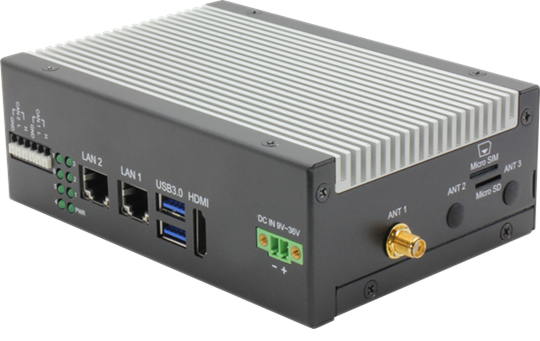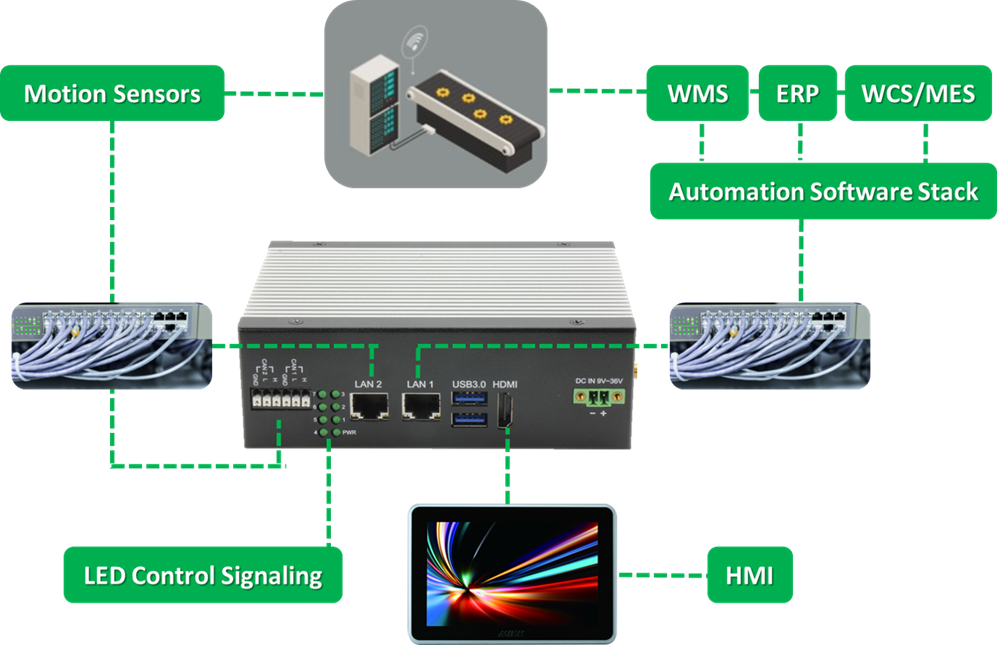In Sync, In Control: The SRG-IMX8P Orchestrates Industrial Efficiency

There are various ways organizations can streamline their manufacturing processes. However, a growing trend among facilities with large, multifaceted operations is to adopt a flexible ecosystem of hardware and software assets that optimize efficiency while reducing downtime. This contrasts with previous approaches to the integration of automation technology in manufacturing, which were characterized by either proprietary, internally developed control systems or investments in entirely new production architectures with automated capabilities. Both of these approaches have obvious limitations, with many organizations deterred by the potential disruption to productivity that automation technology installations may cause, or simply lacking the resources or expertise to develop such technologies.
A global player in industrial manufacturing solutions has been working to promote a new way of bringing automation to manufacturing by integrating a range of assets from different sources and using their proprietary software to achieve synergized operation. Their software-centric industrial automation system comprises a flexible consortium of component solutions that can be retrofitted, allowing production facilities to maintain their existing machinery while benefiting from the heightened efficiency and decreased demand for human resources that machine automation brings.
A central component of the provider’s proposed industrial automation system was an industrial PC (IPC) that could serve as a Programmable Logic Controller (PLC), capable of communicating with and controlling industrial machinery in a factory setting. AAEON’s SRG-IMX8P IoT Gateway was identified as the most suitable candidate for the job, winning the project due to meeting a diverse set of strict criteria outlined by the customer.
Project Requirements

Managing Multiple Concurrent Datasets
The IPC selected to function as a PLC in the application would not only have to accommodate the company’s proprietary software, but also possess the ability to concurrently manage various other software stacks, including enterprise resource planning, warehouse management/control, and manufacturing execution programs. Consequently, the suggested PC required exceptional processing capabilities and flexible storage capacity to meet the diverse and demanding requirements of the application.
Resilient Operation in Industrial Settings
When choosing a device for deployment in a factory setting, systems integrators prioritize specific mechanical features. Foremost among these considerations is the device's ability to operate reliably in harsh conditions, encompassing the capacity to withstand wide temperature ranges, fluctuations in power supply, and the presence of contaminants like dust. Another critical factor is the ease and unobtrusiveness of the device's installation, ensuring that it can be seamlessly integrated into the existing manufacturing architecture without causing disruptions.
Facilitate Large-Scale Serial Communication
A non-negotiable prerequisite for the selected solution was its capability to facilitate data exchange and coordinate inter-machine communication within a broader industrial automation ecosystem. PLCs commonly support communication protocols to interact with various devices and systems, including Human-Machine Interface (HMI) devices, supervisory control and data acquisition (SCADA) systems, and IO nodes. Therefore, it was imperative to have a range of both wired and wireless connectivity options to ensure seamless integration and communication across the industrial automation network.
The Solution: Why the SRG-IMX8P?
Robust i.MX 8M Plus Multi-Die Processor Platform

Fulfilling the customer's requirement for high-level processing capable of handling multiple concurrent data streams from numerous peripheral devices, the SRG-IMX8P was equipped with the i.MX 8M Plus, a robust Quad-Arm® Cortex®-A53 processor featuring multi-die lithography to accommodate an integrated neural processing unit (NPU). This configuration provided the application with significant processing power, more than capable of managing incoming data through both Ethernet/IP and OPC Unified Architecture (OPC UA). For real-time machine control and decision-making, the SRG-IMX8P's NPU boasted 2.3 TOPS, making it highly conducive to the AI functions utilized by the application, including deep learning and the execution of inferencing models.
Rugged, Industrial-Strength Design

The SRG-IMX8P not only met, but exceeded, the customer's requirements for a system capable of functioning in a harsh manufacturing environment. Its wide operating temperature range of -4°F to 158°F (-20°C to 70°C) ensured that the system could operate reliably, even in the face of extreme variations. Additionally, the system's broad 9V to 36V power input range contributed to its reliability, making it resilient to unstable power sources. The fanless mechanical design and efficient heat dissipation of the SRG-IMX8P make it immune to contaminants such as dust, enhancing its longevity and significantly reducing the maintenance needed compared to fan-assisted hardware.
Multifaceted, Broad-Spectrum Connectivity

The SRG-IMX8P’s dual LAN ports made it capable of receiving serial data from two fieldbus devices using Modbus Transmission Control Protocol. One of these devices supported up to 50 IO nodes, facilitating peripheral connectivity with sensors and signals across the facility. The other device was dedicated to executing instructions based on the company’s proprietary software, serving functions equivalent to ERP, WMS, WCS, and MES software. The SRG-IMX8P's additional support for CANBus and RS-232/422/485 played a crucial role in facilitating communication protocols, enabling the relay of control and task-execution instructions to factory machinery.
For monitoring the progress of multiple assembly lines, the SRG-IMX8P featured an HDMI port, simplifying connectivity to a display screen and establishing a user-friendly human-machine interface. In addition to this, the SRG-IMX8P’s seven programmable LEDs served several important functions such as fault and error signaling, machine health status monitoring, visual alerts for safety issues, and provided a visual indication for personnel to monitor various stages of the automation process.
Project Architecture

Impact
As a result of the SRG-IMX8P’s integration with the company’s specialized software, the company was able to install their industrial automation system to automate a large product packaging facility’s operation. The pairing of the SRG-IMX8P with the company’s own IPC allowed for the installation, configuration, maintenance, and simultaneous operation of multiple variations of the company’s proprietary software. This ensured continuous production across multiple packaging assembly lines.
This integration added significant flexibility for the end user, allowing them to add and modify the application’s instruction parameters on one assembly line without halting the operation of others. This approach vastly reduced downtime and ensured continuous, automated operation.
Moreover, the SRG-IMX8P provided an excellent platform for scaling the application to larger facilities requiring multiple installations of the software package due to its 32GB of onboard eMMC and microSD card slot, capable of hosting SSDs.
The success of this application represents how a more modular approach to industrial automation can be of benefit to large organizations or facilities that may otherwise have required multiple gateways in order to cope with the volume of data being processed. Further, it indicates that previous barriers to the adoption of automation technology in the industrial sphere are no longer an issue, given the scalability and future-proof nature of the application with respect to both its hardware compatibility and ability to install, upgrade, and amend software on said hardware while maintaining operation.
